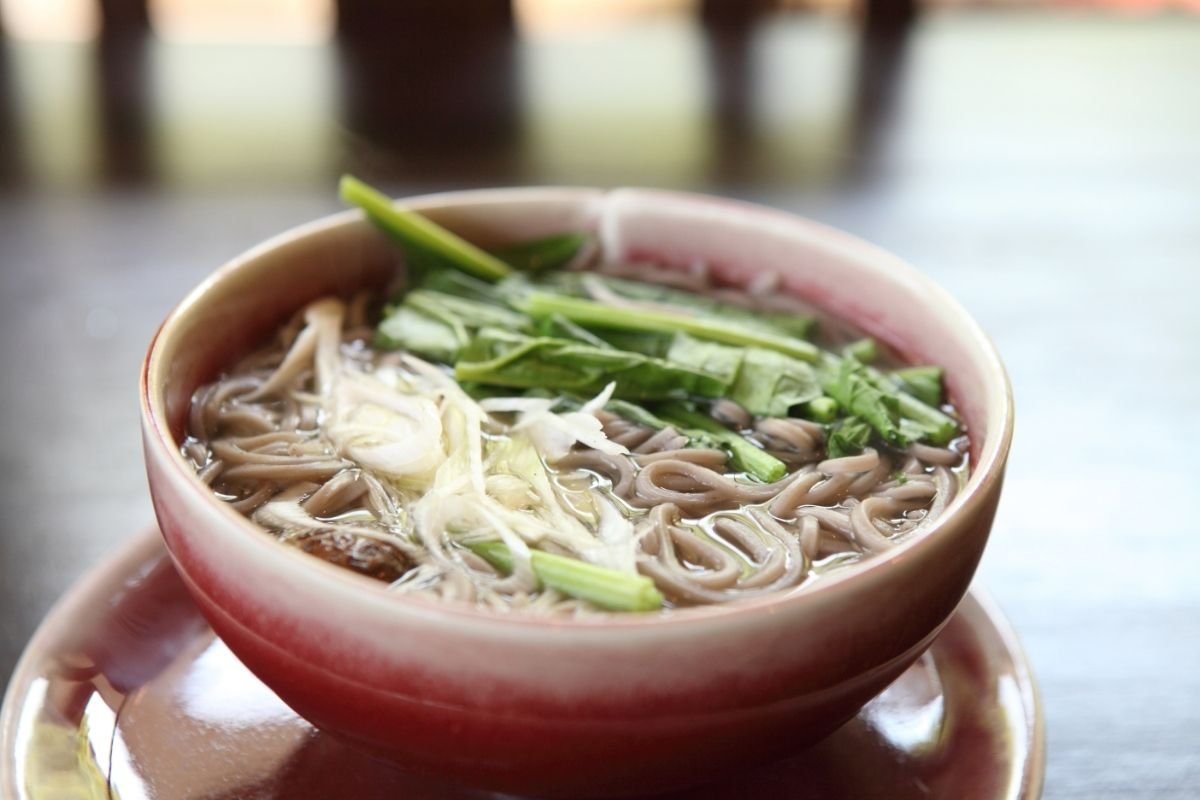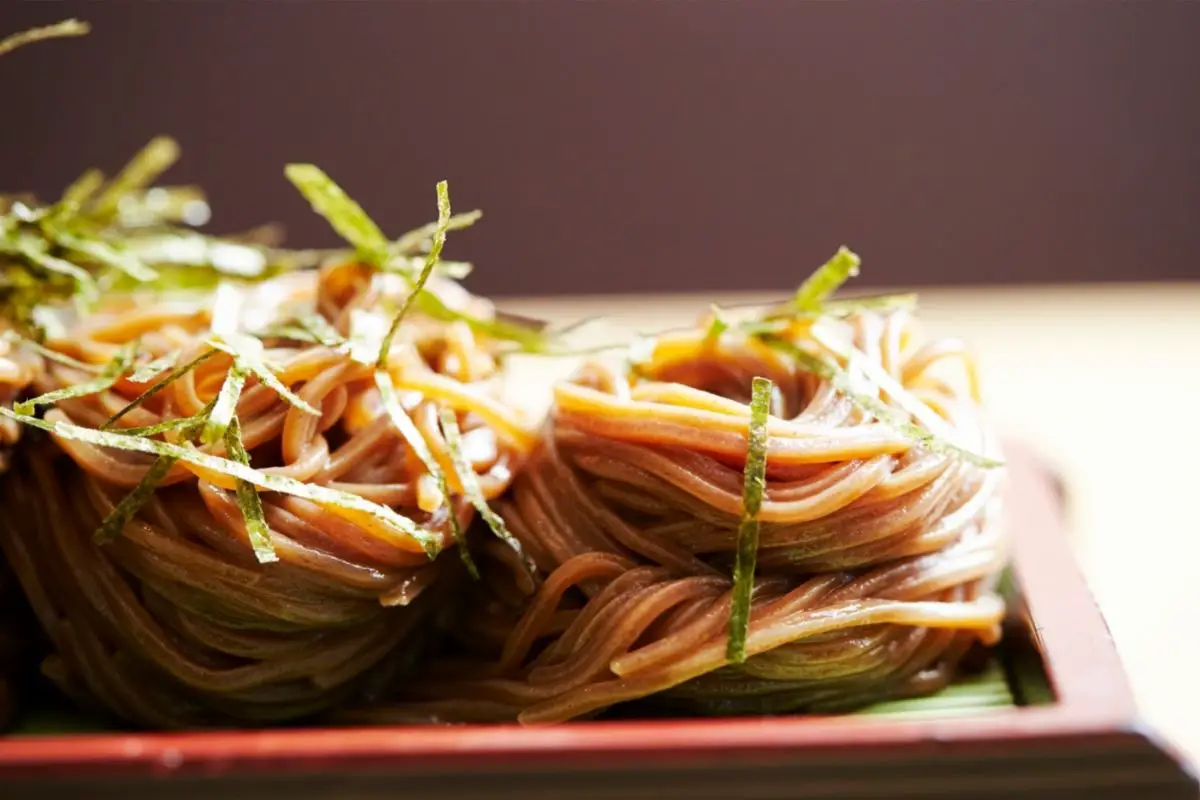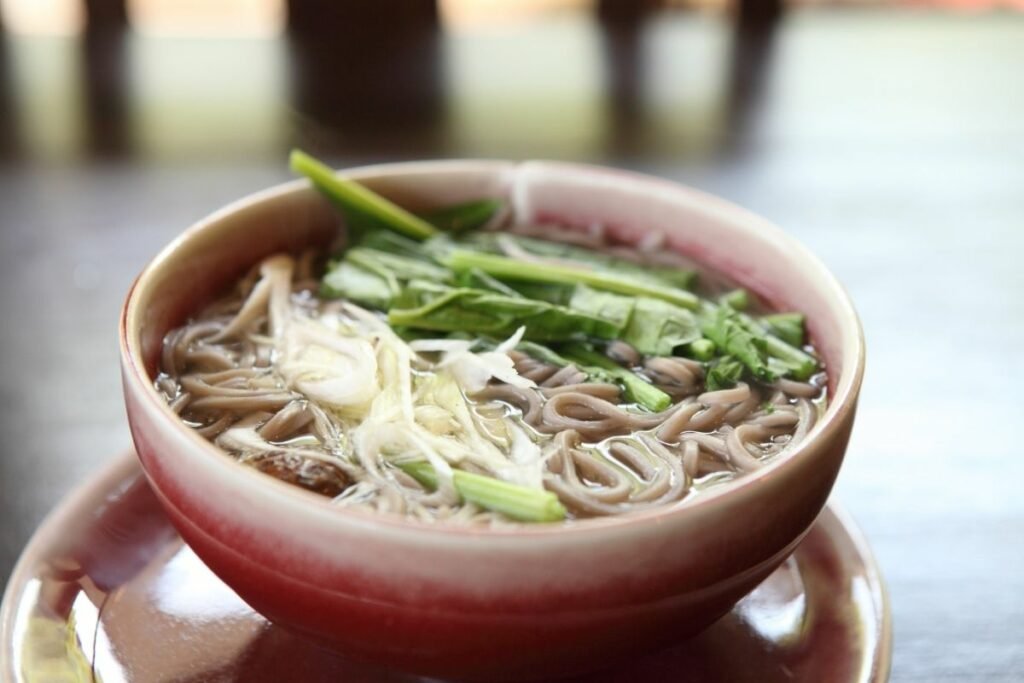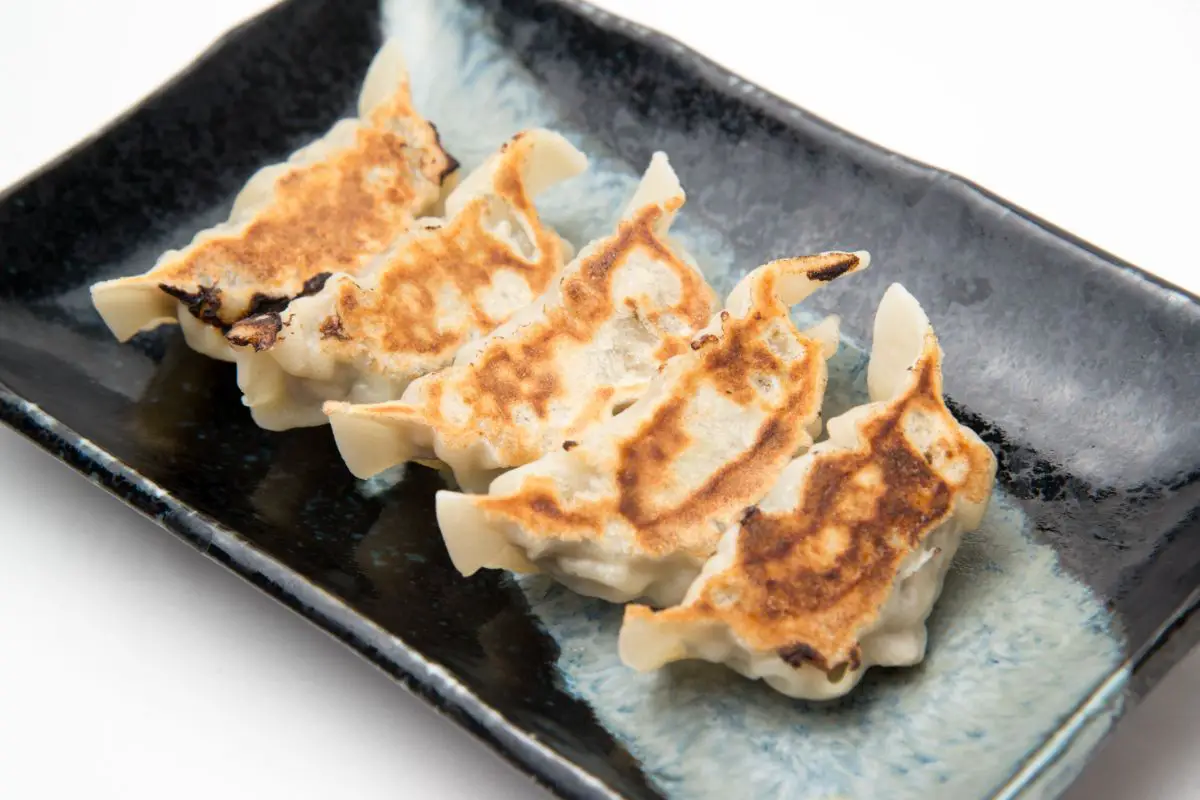Soba noodles are traditionally Japanese noodles that consist of buckwheat flour. These noodles are thick and are therefore compared to spaghetti.
These noodles can be consumed hot and cold and their nutty-taste works beautifully in a stir-fry.

Whilst these noodles are great for anyone who is watching the calories, there are some unwanted drawbacks that come from consuming soba noodles.
Are There Health Benefits Of Soba Noodles?
There are many benefits to consuming products that contain buckwheat flour including soba noodles.
Soba noodles do not contain gluten and thus, they are the perfect alternative for those who are unable to consume wheat-based products.
Soba models are also useful in preventing heart disease due to buckwheat flour being rich in phytonutrients.
Phytonutrients are natural antioxidants that help to prevent a wide range of diseases. This style of flour is also a great source of fiber, iron, carbohydrates and manganese.
Manganese is a key feature of many enzymes including antioxidant enzymes. These enzymes are highly useful to kill any harmful toxins that can prevent cell damage.
Manganese also assists in collagen production and collagen helps to promote wounds healing as well as healthy bones.
Buckwheat noodles do not contain many essential vitamins, however, the high level of manganese in soba noodles has undoubted health benefits.
Dr. Schapiro has stated that eating “one-hundred percent buckwheat flour can be as healthy as consuming fruits and vegetables”.
Soba noodles are also the perfect way to integrate manganese into your diet successfully in order to maintain balance.
Are Soba Noodles Better Than Traditional Pasta?
Soba noodles contain far fewer calories than traditional forms of pasta. They also contain a larger amount of protein and fiber that helps to maintain blood sugar.
Traditional pasta tends to contain a higher number of calories and sugars due to it consisting of refined flour. Soba noodles even contain fewer calories than healthier forms of pasta like wheat pasta.
One portion of cooked noodles only equates to 113 calories which is only just over five percent of a daily allowance.
Conversely spaghetti contains 220 calories per portion (when measured in a cup). Therefore, switching to soba noodles will save you approximately 16,692 calories per year which is the equivalent of five pounds of body weight.
What Are The Drawbacks Of Eating Soba Noodles?

Soba noodles can have a negative impact on your blood sugar levels due to their glycemic content.
A food’s glycemic content considers its carbohydrate content and how fast the food will increase blood sugar levels after consumption.
Soba noodles have a glycemic level of 22 which means that they can have a major impact on blood sugar. Therefore it is recommended that you have a limited intake of food with a high glycemic level.
When consuming soba noodles, you should also check the ingredients as it can be easy to assume that they are entirely made from buckwheat flour.
However, many will contain refined forms of flour as well as buckwheat and thus, the health risks of regular consumption will outweigh the benefits.
You should always read the label to ensure that the main ingredient is buckwheat flour.
If you are switching from spaghetti or wheat pasta to soba noodles, you will also be missing out on vital B-vitamins as well as a substantial amount of iron that is typically contained in wheat pasta.
Thus, you should include iron-rich ingredients with your noodles.
Preparing meals that include foods of nutritional value like chicken, shrimp, beef or tofu, will ensure that you are receiving a necessary amount of iron and other nutrients.
Adding steamed vegetables to a stir-fry is another means of topping your noodles up with healthy amounts of fiber, vitamins and antioxidants.
What Noodle Recipes Are Good For Weight Loss?
The best way to incorporate soba noodles into your diet and promote weight loss is to experiment.
Being as creative as possible with buckwheat noodles not only enhances their flavor, but also means that you are providing the best base for delicious meals.
In order to focus your soba noodle dishes on weight-loss, make sure that you are using a plethora of vegetables in your dishes.
Vegetables like spinach and broccoli are the perfect additions as these veggies contain a healthy amount of iron, vitamins and minerals whilst being low in fats and carbohydrates.
Broccoli also contains 80 milligrams of vitamin C which makes up nearly half of your daily requirement of this vital vitamin. Then, add a healthy source of protein to your noodle-based meal.
Using leaner forms of protein like chicken is the best way to spruce up your dishes without adding too many additional calories.
Tofu is also the best vegetarian alternative and is commonly used alongside soba noodles due to its high levels of calcium protein, magnesium and zinc.
Topping your dishes up with a fried egg is also a great way to add proteins to your meal as well as vitamins B12 and A. Be sure to add some seasoning and spices to your noodles in order to make them taste incredible.
Adding chopped onions, garlic or pepper flakes and driving them with healthy oils like sesame oil is the perfect way to pack your noodle dishes full of flavor without overloading them with unnecessary calories.
Conclusion
To conclude, soba noodles have many health benefits due to their low fat content. They are also the perfect alternative for those who have a gluten intolerance as they are usually made from 100% buckwheat flour.
However, you should always read the label and as with all foods, consume these noodles in moderation in order to reap the full health benefits of soba noodles.









